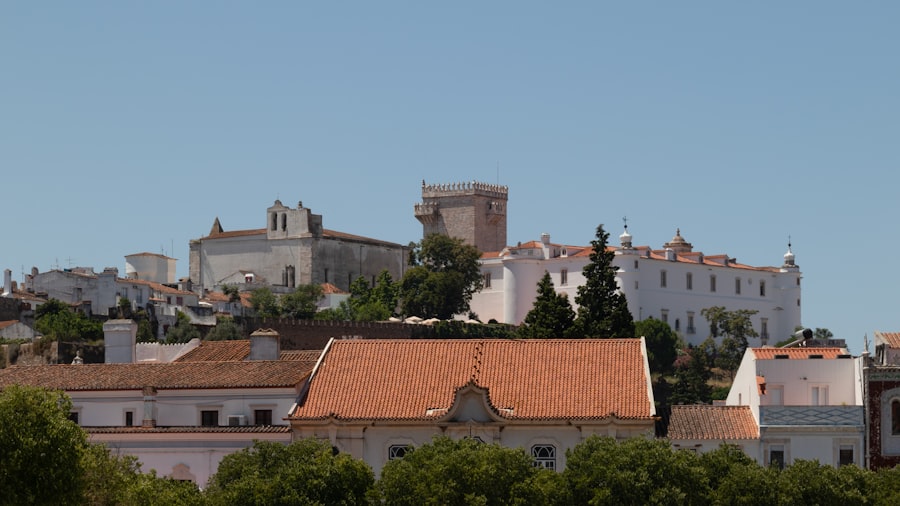Download links
How to install Manila Cathedral: A Historic Gem in the Philippines APK?
1. Tap the downloaded Manila Cathedral: A Historic Gem in the Philippines APK file.
2. Touch install.
3. Follow the steps on the screen.
Description
The Manila Cathedral, officially known as the Cathedral-Basilica of the Immaculate Conception, stands as a monumental symbol of faith and resilience in the heart of the Philippines’ capital. Nestled within the historic Intramuros district, this ecclesiastical edifice is not merely a place of worship; it embodies centuries of history, culture, and architectural evolution. As the mother church of the Archdiocese of Manila, it serves as a spiritual beacon for millions of Filipino Catholics and visitors alike.
The cathedral’s grandeur and historical significance make it a focal point for both religious observance and cultural appreciation. Visitors to Manila Cathedral are often struck by its imposing façade and intricate details that reflect a blend of various architectural styles. The cathedral’s presence is not just a testament to religious devotion but also an enduring symbol of the Filipino spirit, having withstood numerous adversities throughout its long history.
As one steps through its doors, the atmosphere is imbued with a sense of reverence and awe, inviting contemplation and reflection. The cathedral’s role extends beyond its religious functions; it is a vital part of the cultural and historical tapestry of the Philippines.
Key Takeaways
- Manila Cathedral is a historic and iconic landmark in the Philippines, located in the heart of Manila.
- The cathedral has a rich history dating back to the Spanish colonial period and has undergone several reconstructions due to natural disasters and war.
- Architectural features of the Manila Cathedral include a combination of Romanesque, Renaissance, and Baroque styles, with intricate details and ornate designs.
- The cathedral has played a significant role in Philippine history, serving as a witness to key events such as the country’s independence and the visit of Pope John Paul II.
- Manila Cathedral holds cultural significance as a symbol of faith and resilience for the Filipino people, and it continues to be a place of worship and pilgrimage.
History of Manila Cathedral
The history of Manila Cathedral is a narrative woven with threads of triumph and tragedy, beginning with its establishment in 1581. Originally constructed as a simple wooden structure, the cathedral was built to serve the growing Catholic community in Manila, which was established as a Spanish colonial outpost. Over the years, the cathedral underwent several reconstructions due to natural disasters, including earthquakes and fires that ravaged the city.
Each rebuilding effort reflected not only the architectural trends of the time but also the resilience of the Filipino people in preserving their faith. The most significant reconstruction occurred after World War II when the cathedral was left in ruins following extensive bombings. In 1954, under the guidance of architect Fernando Ocampo, a new structure was erected, incorporating elements from previous designs while introducing modern features.
This rebuilding marked a new chapter in the cathedral’s history, symbolizing hope and renewal for a nation emerging from the shadows of war.
Architectural Features of Manila Cathedral

Manila Cathedral is an architectural marvel that showcases a harmonious blend of Romanesque and Neo-Gothic styles, characterized by its grand façade adorned with intricate sculptures and reliefs. The cathedral’s exterior features a prominent rose window, which serves as a focal point, allowing natural light to filter into the interior while creating a stunning visual effect. The use of local materials, such as adobe bricks and coral stone, not only reflects the region’s resources but also contributes to the building’s unique character.
Inside, visitors are greeted by an expansive nave that is both awe-inspiring and serene. The high vaulted ceilings create an atmosphere of grandeur, while the carefully crafted stained glass windows depict biblical scenes that enhance the spiritual ambiance. The altar, intricately designed and adorned with religious iconography, serves as the heart of the cathedral, drawing worshippers into a space of devotion.
Additionally, the cathedral houses several chapels dedicated to various saints, each showcasing unique artistic elements that reflect the rich heritage of Catholicism in the Philippines.
Role of Manila Cathedral in Philippine History
| Event | Role of Manila Cathedral |
|---|---|
| Spanish Colonial Period | Used as a center for religious and political power by the Spanish colonizers |
| Philippine Revolution | Served as a refuge and hospital for the wounded during the revolution against Spanish rule |
| World War II | Partially destroyed during the war and later rebuilt as a symbol of resilience and faith |
| Post-Independence | Continues to be a significant religious and historical landmark in the Philippines |
Throughout its existence, Manila Cathedral has played a pivotal role in shaping Philippine history. As a center for religious activity, it has been the site of numerous significant events, including papal visits and national celebrations. The cathedral has witnessed key moments in Philippine history, such as the declaration of independence from Spanish rule in 1898 and various political upheavals throughout the 20th century.
Its walls have echoed with prayers for peace during times of conflict and have served as a refuge for those seeking solace amid turmoil. Moreover, Manila Cathedral has been instrumental in fostering a sense of national identity among Filipinos. During periods of colonization and foreign influence, it stood as a symbol of resilience and continuity in faith.
The cathedral has also been a gathering place for social movements advocating for justice and human rights, reflecting its role not only as a religious institution but also as a platform for civic engagement. This duality underscores its significance in both spiritual and socio-political contexts.
Cultural Significance of Manila Cathedral
The cultural significance of Manila Cathedral extends beyond its architectural beauty; it is deeply intertwined with Filipino identity and heritage. As one of the oldest churches in the Philippines, it serves as a repository of collective memory for generations of Filipinos who have gathered within its walls for baptisms, weddings, and funerals. These rites of passage are not merely personal milestones; they are communal events that reinforce social bonds and cultural traditions.
Furthermore, Manila Cathedral is often featured in various cultural expressions, including literature, music, and visual arts. Artists have drawn inspiration from its majestic structure and rich history, creating works that celebrate its beauty and significance. The cathedral also plays an essential role during major religious festivals such as Christmas and Holy Week, where it becomes a focal point for celebrations that attract thousands of devotees.
These events highlight the intersection of faith and culture in Filipino society, showcasing how deeply embedded religious practices are within everyday life.
Restoration and Preservation Efforts of Manila Cathedral

Recognizing its historical and cultural importance, various restoration and preservation efforts have been undertaken to ensure that Manila Cathedral remains a vital part of Philippine heritage. Following its destruction during World War II, extensive restoration work was initiated to restore its former glory while adhering to modern safety standards. These efforts involved meticulous research into historical documents and photographs to accurately replicate original designs while incorporating contemporary materials that enhance structural integrity.
In recent years, ongoing maintenance has focused on preserving both the interior and exterior elements of the cathedral. This includes regular cleaning and restoration of stained glass windows, sculptures, and decorative features that have weathered over time. The Archdiocese of Manila has also engaged with local artisans to ensure that restoration efforts honor traditional craftsmanship while employing modern techniques to safeguard against future damage.
These initiatives reflect a commitment to preserving not only the physical structure but also the spiritual legacy it represents.
Manila Cathedral as a Tourist Destination
As one of Manila’s most iconic landmarks, Manila Cathedral attracts tourists from around the world who come to admire its architectural splendor and historical significance.
Guided tours provide insights into the cathedral’s rich history, allowing guests to appreciate its role within the broader context of Philippine heritage.
The surrounding Intramuros district further enhances the tourist experience, offering a glimpse into colonial-era architecture and history. Tourists can explore nearby attractions such as Fort Santiago and San Agustin Church, creating an enriching itinerary that highlights Manila’s historical depth. Additionally, special events held at the cathedral—such as concerts or art exhibits—draw even more visitors, showcasing how this sacred space continues to evolve while remaining rooted in tradition.
Manila Cathedral in Modern Times
In contemporary society, Manila Cathedral continues to serve as a vital center for worship and community engagement amidst an ever-changing landscape. It remains at the forefront of social issues affecting Filipino society, often addressing topics such as poverty alleviation and social justice through various outreach programs. The cathedral’s leadership actively encourages parishioners to engage in community service initiatives that reflect their faith in action.
Moreover, Manila Cathedral has embraced modern technology to enhance its outreach efforts. Live-streaming services have become increasingly popular, allowing those unable to attend in person to participate in worship from afar. This adaptation reflects a broader trend within religious institutions worldwide as they seek to remain relevant in an increasingly digital age.
Through these efforts, Manila Cathedral not only preserves its historical legacy but also ensures that it continues to be a source of inspiration and hope for future generations.
FAQs
What is the Manila Cathedral?
The Manila Cathedral, also known as the Metropolitan Cathedral of the Immaculate Conception, is a Roman Catholic basilica located in the Intramuros district of Manila, Philippines.
When was the Manila Cathedral built?
The original Manila Cathedral was built in 1581, but it has been destroyed and rebuilt several times due to natural disasters and wars. The current structure was completed in 1958.
What is the architectural style of the Manila Cathedral?
The Manila Cathedral features a combination of architectural styles, including Baroque, Neo-Romanesque, and Neo-Byzantine influences.
What is the significance of the Manila Cathedral?
The Manila Cathedral is a significant religious and cultural landmark in the Philippines. It has been the site of many important events in the country’s history, including the papal visits of Pope Paul VI, Pope John Paul II, and Pope Francis.
Is the Manila Cathedral open to the public?
Yes, the Manila Cathedral is open to the public for worship, prayer, and guided tours. Visitors are welcome to explore the cathedral’s interior and learn about its history and significance.





